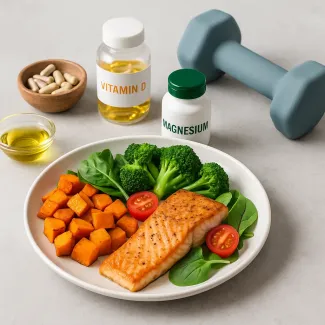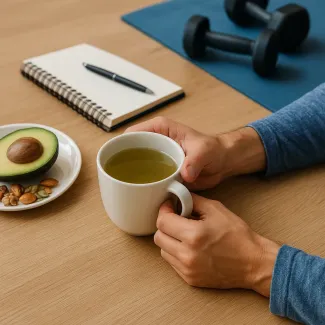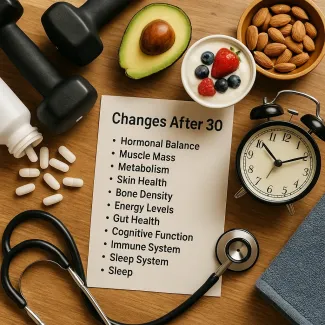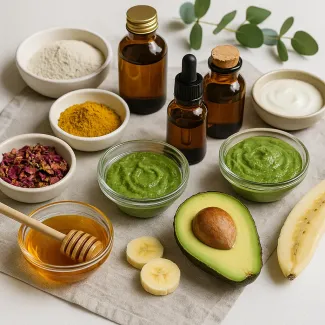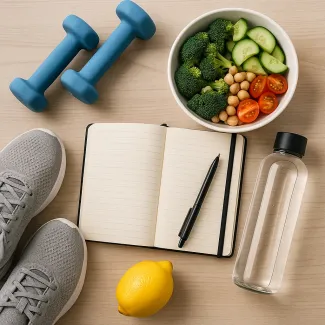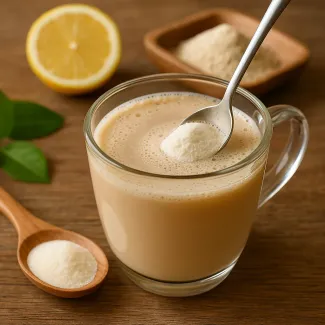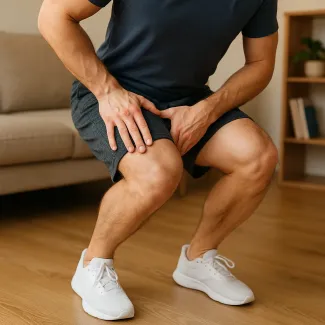
Understanding Groin Pain When Squatting: A Guide to Lasting Relief
Explore the real reasons behind groin pain during squats and discover practical methods to ease discomfort
How groin anatomy influences squat movement
The groin region, medically referred to as the inguinal area, is a complex structure involving multiple muscles, tendons, ligaments, and nerve pathways. When you squat, your body places stress on hip flexors, adductors, and the pelvic floor, especially if your form is compromised or if there's a pre-existing imbalance. The adductor longus, gracilis, and pectineus muscles all contribute to stabilizing the movement. If even one of these muscles is tight, inflamed, or overused, you may experience sharp or dull pain in the groin area when descending or ascending from a squat.
It’s important to understand that not all groin pain is the same. It can be muscular, tendinous, ligamentous, or even neurological in origin. The location (high groin vs. low groin), type of pain (sharp, burning, pulling), and timing (during or after the squat) all offer clues to the underlying cause.
Common causes of groin pain during squats
Groin discomfort when squatting is often the result of a combination of biomechanical imbalances, poor technique, or underlying injuries. Among the most frequent causes are:
- Hip impingement (FAI): The femoral head may pinch against the acetabulum due to bony abnormalities, causing pain deep in the groin.
- Adductor strain: Overuse or sudden overload of the adductor muscles can result in microtears or inflammation.
- Sports hernia (athletic pubalgia): This occurs when soft tissue around the groin is overstressed, especially during explosive movements.
- Pelvic floor tension: Excessive bracing, breath holding, or improper engagement can cause pain in the deeper pelvic muscles.
- Labral tear: Damage to the labrum of the hip can cause clicking, catching, and groin pain.
- Nerve entrapment: The obturator or genitofemoral nerves can be compressed or irritated, resulting in radiating groin pain.
Each of these issues may manifest with similar symptoms but requires different management strategies. That's why identifying the true source of pain is essential before attempting rehabilitation.
Improper squat form and technique mistakes
Even the strongest athletes can suffer from groin pain if their squat technique is flawed. Poor mechanics place excess strain on stabilizing muscles and compromise joint alignment. Key mistakes include:
- Feet placed too wide or too narrow, altering the angle of hip rotation
- Excessive forward lean, shifting pressure from hips to groin
- Poor hip mobility, leading to compensation through adductor overuse
- Failing to brace the core properly, which destabilizes the pelvis
- Knees collapsing inward (valgus), stressing the inner thighs and groin
These faults might seem minor, but repeated repetition over time amplifies the damage. Even small changes in squat stance can create major consequences for muscle recruitment and joint stress.
Identifying red flags that require attention
While occasional discomfort can be part of intense training, some warning signs should not be ignored:
- Persistent groin pain lasting more than a few days
- Pain that radiates into the inner thigh, lower abdomen, or hip
- Audible popping or clicking during movement
- Swelling, bruising, or heat in the groin region
- Sudden, sharp pain during a lift that doesn’t resolve
These signs could indicate serious injuries such as tendon ruptures, labral tears, or nerve entrapments. Continuing to train without intervention may worsen the condition and prolong recovery.
Movement patterns that contribute to imbalances
Modern life, with its hours of sitting and reduced dynamic movement, alters your hip and pelvic mechanics. This often leads to:
- Tight hip flexors
- Underactive glutes
- Weak core stabilizers
- Shortened adductors
These imbalances shift the workload to smaller, less capable muscles like those in the groin. When you squat, your body recruits these muscles not because they’re optimal, but because they’re the only ones ready to work. Over time, this leads to compensatory patterns and chronic strain.
Correcting these patterns means retraining how your body moves, not just which muscles are strong.
Daily habits that influence groin health
Beyond squats themselves, your daily movement habits play a critical role in groin health:
- Sitting with legs crossed can shorten adductors
- Driving long distances tightens hip flexors
- Sleeping in fetal position may increase pelvic tension
- Wearing restrictive clothing can compress groin structures
Improving groin comfort starts with awareness and adjustment of these subtle daily stressors. Making changes off the gym floor can prevent pain during training.
How to assess groin pain and mobility yourself
Self-assessment can help determine whether the pain is joint-related or muscular. Some effective tools include:
- Lying adductor stretch test: Discomfort may point to tight inner thigh muscles
- Hip flexion with resistance: Pain here may signal labral issues or impingement
- Palpation of the pubic area: Tenderness might indicate sports hernia
- Squat without weight: If pain persists in bodyweight movement, it's likely a biomechanical or injury-related issue
Documenting which motions cause pain, their intensity, and how long it lasts helps guide treatment decisions. If pain worsens or doesn’t improve after adjusting form, professional evaluation is advised.
The role of warm-up and activation
Many cases of groin pain could be prevented by preparing the body properly. A dynamic warm-up that includes mobility drills, light activation, and progressive loading primes the muscles for safe performance. Key areas to focus on include:
- Adductors: Lateral lunges and Cossack squats
- Hip flexors: Active stretches and resistance band openers
- Glutes and abductors: Monster walks, side steps, and bridges
- Core: Dead bugs, bird-dogs, and planks for trunk stability
Jumping into heavy squats without neuromuscular readiness is like driving at full speed without warming up the engine.
Restoring balance through strength and mobility
When dealing with groin pain, the goal is to restore balance between mobility and strength. Both excess tightness and weakness contribute to the problem. A well-rounded rehab approach includes:
- Foam rolling the adductors, quads, and glutes to reduce tension
- Active mobility drills like hip CARs (controlled articular rotations)
- Isometric adduction exercises to rebuild strength without load
- Eccentric loading of the groin to improve tendon resilience
- Unilateral movements such as Bulgarian split squats to fix side dominance
Consistency is key. These corrective strategies must be performed daily over time to create permanent change.
How footwear and surface affect performance
Something as seemingly minor as shoe type or gym surface can impact groin stress. Minimalist shoes, for example, may expose weak foot mechanics that translate into hip instability. On the other hand, overly cushioned shoes might reduce proprioception and feedback, altering your squat depth and alignment.
Likewise, squatting on uneven or soft surfaces changes force distribution. A stable, hard surface with proper footwear that supports your foot shape and arch will reduce the risk of compensatory movement patterns.
Adapting squat stance to your anatomy
Not everyone should squat with the same foot width and toe angle. Your hip socket orientation, femur length, and pelvic shape determine your ideal stance. Some people need a wider stance with toes out, while others perform best with a narrow, upright squat.
Experimenting with:
- Foot angle: 5–30 degrees of external rotation
- Foot width: shoulder-width to slightly wider
- Depth limit: stopping before the pain point
...can help you find a squat style that’s both effective and pain-free.
The importance of progressive loading
If you’ve experienced groin pain, don’t return to heavy weights immediately. Progressive loading, where you gradually reintroduce resistance, helps your body adapt safely. Use techniques such as:
- Tempo squats to control movement speed and monitor tension
- Pause squats at comfortable depth to build strength in compromised positions
- Goblet squats before back squats to relearn core bracing and hip motion
Skipping steps or returning too soon to max effort lifts can cause setbacks and re-injury. Think of rehab not as time away from training, but as strategic rebuilding.
Managing flare-ups and pain during training
If pain appears mid-session, avoid pushing through. Instead:
- Switch to a variation such as box squats or split squats
- Decrease load and range temporarily
- Apply ice or heat post-workout depending on pain type
- Avoid deep hip flexion if it aggravates symptoms
It’s better to adjust in the moment than to risk prolonged injury.
When to seek help from professionals
If groin pain persists beyond self-care, a healthcare provider can offer deeper insight. Seek out:
- Physiotherapists with expertise in strength sports
- Orthopedic specialists for potential labral or bony issues
- Pelvic health therapists for deeper muscular or nerve-related dysfunction
Imaging may be recommended in cases with persistent pain, joint locking, or neurological symptoms.
Training alternatives that reduce groin stress
During recovery or if pain is severe, consider squat alternatives such as:
- Trap bar deadlifts
- Leg presses with a neutral stance
- Step-ups and lunges
- Glute bridges or hip thrusts
- Cable hip adduction with light resistance
These can maintain lower body strength and function without overloading the groin.
Supplements and recovery practices that support healing
While no supplement replaces proper movement, certain nutrients support tissue repair:
- Magnesium for muscle relaxation
- Omega-3 fatty acids to reduce inflammation
- Collagen + vitamin C to aid tendon healing
- Turmeric (curcumin) for joint support
Recovery practices like contrast baths, gentle yoga, and guided breathwork also contribute to tissue regeneration and nervous system regulation.
Building long-term resilience in the groin and hips
The ultimate goal is not just being pain-free, but resilient. This means developing:
- Balanced strength across all muscle groups
- Joint mobility and stability
- Motor control and body awareness
- Load tolerance across various ranges of motion
Lifters who thrive long term are those who move well, not just lift heavy. Your groin is a vital part of that equation—respect it, train it, and it will support your movement for years.
